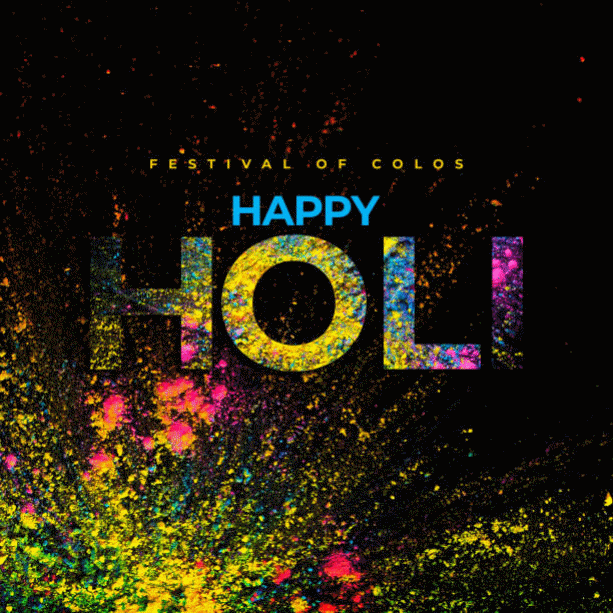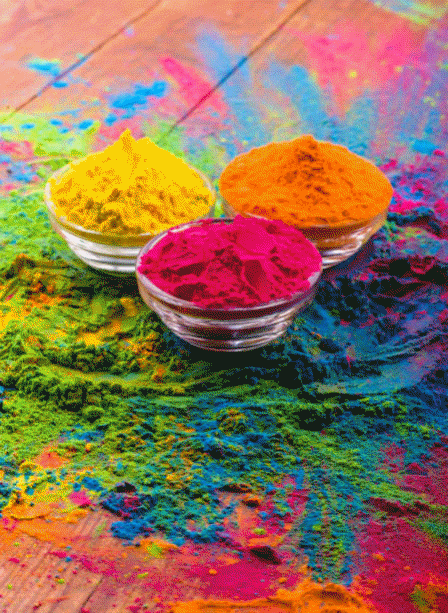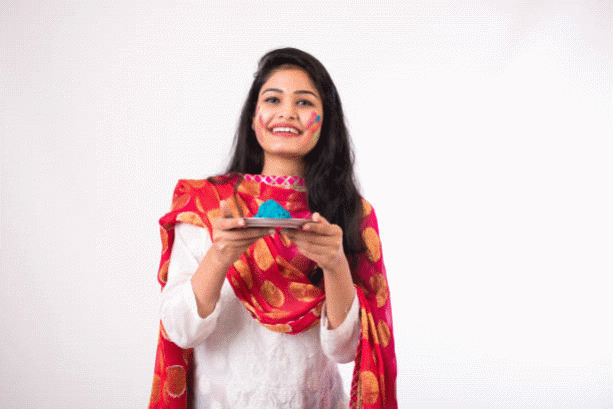बारिश के दिनों में प्रोडक्टिव कैसे रहें – वर्क फ्रॉम होम संस्करण
बारिश के दिनों में घर से काम करते समय फोकस और प्रोडक्टिविटी बनाए रखने के आसान और प्रभावी तरीके।

During the yearly Hindu holiday of Holi, which typically takes place in March, bright neon powder covers revelers in northern India. Holi sometimes referred to as the festival of colors, is observed on the final full moon of the Phalguna lunar month.
This age-old custom celebrates the end of winter and the victory of good over evil. Bonfires are lit, gulal, a colored powder, is thrown, sweets are consumed, and folk dances are performed.
History of Holi

With its cultural customs, the Holi festival is a long-standing Hindu celebration. During Chandragupta II's rule in the fourth century, it is described by the poet Klidsa, Dasakumara Charita, and the Puranas. The Sanskrit drama Ratnavali from the seventh century AD also makes reference to the Holi festival.

By the 17th century, British colonial employees and European businessmen were fascinated by the Holi celebration. With different, phonetically derived spellings, it is mentioned in several old editions of the Oxford English Dictionary: Houly (1687), Hooly (1698), Huli (1789), Hohlee (1809), Hoolee (1825), and Holi in versions printed after 1910.
Significance of Holi 2023

The Hindu culture greatly values the festival of Holi. It marks the end of the fight, a fresh start from past mistakes, and a day when people are able to forget and forgive. Most of the time, people repay their debts as well as forgive them, accepting new agreements in their life.
Celebrations of Holi 2023

The Holi festival is observed throughout all of India, with local customs varying. The celebration of Holi is generally more vibrant in North India, especially the Golden Triangle of Delhi, Agra, and Jaipur, than in the Southern region of India, which is more concerned with religion and temple ceremonies.

Every part of these cities participates in the Holi celebration. On the morning of the festival, people in Delhi usher in a great carnival. Men and women of all ages take to the streets to smear colorful powders and water at one another while singing and dancing and chanting, "Holi hai" (It is Holi). The residential areas of South Delhi are the greatest place to celebrate Holi. A well-liked Holi event today is the Holi Cow Festival, sometimes referred to as the Holi Moo Festival. The festival features street cuisine, thandai, a yogurt beverage with spices, dance, and music in non-toxic colors.
The Importance of Holika Burning

The monsoon's arrival is impacted by the burning of the Holika (the bonfire that is lit the night before Holi). There is a Prahlada tale (from where the festival of Holi originated). Prahlada was a little child who had a strong devotion to God, but his father did not believe in God. Because he was offended that the kid was preaching in the name of God, his father, a highly egoistic and harsh king, intended to teach his son a lesson.

He made numerous attempts to influence his son, but the boy was unmoved. When he was unable to alter him, he wanted to murder him. He then went up to one of his sisters. She had a curse that anyone she sat on her lap would be burned alive. Holika was her name. She put Prahlada on her lap with the intention of burning him, but according to the legend, she was burned to death while Prahlada escaped unharmed because he was reciting Hari Om and was devoted to God, which shielded him from the flames.

People do firewalking in several Indian villages, but not even a single blister appears on their feet! Faith is extremely powerful and supports life. This is the underlying meaning of Holika's burning.
Holi International

Bars and bounds are nothing to Holi. Everywhere there are Indians or people with Indian ancestry, Holi is celebrated with vigour and goodwill. People have fun with color, ignite the Holika bonfire, and rejoice in the triumph of good over evil. Any festival's main purpose is to divert attention from daily tedium and make it more entertaining. The other main goal of festival celebrations is to unite people, foster a sense of fraternity, and promote harmony everywhere.
No one is more aware of the value of festivals than Indians who have immigrated to other countries and lost touch with their cultural heritage. They occasionally exhibit greater holiday zeal than their Indian counterparts. Because sharing in festival celebrations helps Indian-born people stay connected to their heritage.
People who have emigrated from India meet up with their friends and offer greetings and sweets. Of course, when it comes to colors, the celebration is just as intense.
Food on Holi

Traditional delicacies like gujiya, a delicious fried dumpling filled with dried fruits and thickened milk, are another aspect of Holi. Kanji vada, a meal of lentil fritters swimming in fermented mustard water, is one of the savory Holi delicacies. These recipes make sure that Holi is as delicious as it is colorful with its extravagant flavors and fragrances.
बारिश के दिनों में घर से काम करते समय फोकस और प्रोडक्टिविटी बनाए रखने के आसान और प्रभावी तरीके।
Stay focused and efficient on rainy days while working from home with these smart productivity tips, home-office ideas, and motivation boosters.
बारिश के मौसम में इम्युनिटी बढ़ाने के लिए इन 10 प्राकृतिक और देसी चीज़ों को अपने खाने में शामिल करें। सर्दी-ज़ुकाम से बचें और शरीर को अंदर से मजबूत बनाएं।
Stay healthy this rainy season with these top 10 natural monsoon foods. Boost your immunity, fight infections, and stay energized with Ayurvedic-inspired diet choices.

